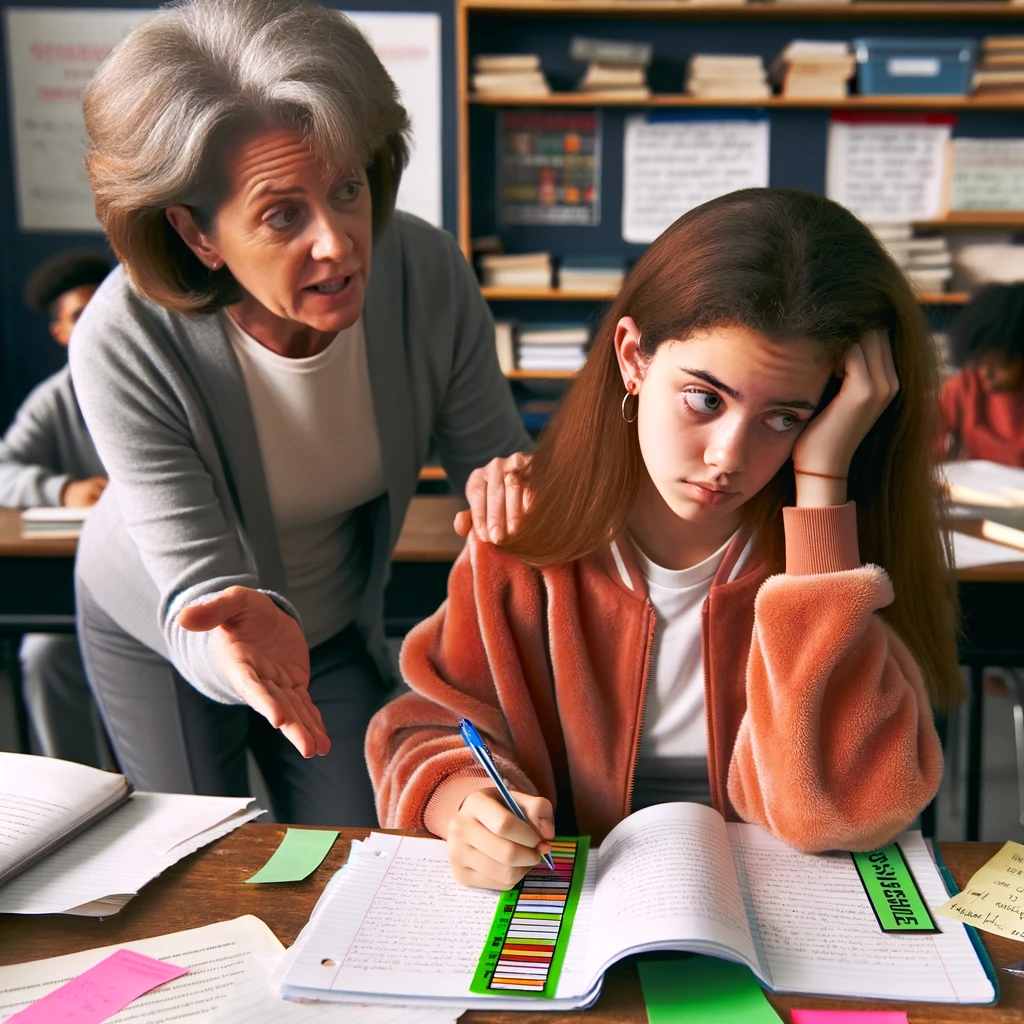Teaching history can be both exhilarating and challenging. Balancing the rich tapestry of events with the analytical skills required to interpret them demands versatile educational tools. Enter the “Story, Source, and Scholarship” history resource – a complete, self-contained lesson plan that doesn’t necessitate additional textbooks. Here’s a guide on how you can weave this resource seamlessly into your high school history curriculum, irrespective of the specific historical era being covered. My No.1 history resource of choise as I explained here.

For teachers the resource is tailored to guide students through distinct facets of the topic independently:
By aligning each task to its respective section, students are steered through a layered exploration, from basic comprehension to analytical inquiry, reflecting the depth and complexity of the topic. Students simply sequeitally qorkl their way thruogh the tasks in order. Providing a clear strure and sequence for your lesosns.
- Task 1: Anchored in the Story section, it focuses on establishing a foundational grasp of the historical narrative. Students extract key events and their implications, understanding the timeline and challenges of the Weimar Republic.
- Task 2: Set within the Source section, students are immersed in firsthand accounts, gaining insights into the personal and societal effects of the crisis. They’re prompted to correlate individual experiences with broader events.
- Task 3: Navigating the Scholarship section, the task emphasizes the synthesis of primary stories with academic perspectives. Students juxtapose firsthand accounts with scholarly interpretations, promoting a nuanced view of the crisis’s long-term impact.
1. Kickstart with a Focused high school History Question
Every “Story, Source, and Scholarship” resource is centered around a key historical question link to curriculum. Whether you’re delving into ancient civilizations or the tumultuous events of the 20th century, initiate the lesson with this question. This primes students’ curiosity and sets the direction for their exploration.

2. Narrative Exploration with Guided Reading
Ditch the textbook! The guided reading section in the resource presents a succinct yet comprehensive narrative of the chosen historical topic:

- Interactive Reading: Divide the class into groups and assign different sections. This division ensures each student engages deeply with a part of the narrative.
- Title and Bullet-Point Summaries: Encourage students to summarize their section with a title and two key bullet points, promoting concise information extraction.
- Collaborative Overview: Have groups present their summaries, ensuring a collective understanding of the entire event or era.

3. Foster Critical Analysis with Source Skills
Students move from narrative to analysis by diving into primary and secondary sources:

- Visual Analysis: Use images to spark discussions. What do they reveal about the period? How do they relate to the narrative read?
- Document Scrutiny: Quotes and excerpts bring the era to life. Discuss these, exploring their implications and relevance to the focus question.
- Comparative Discussion: Encourage students to compare sources, understanding nuances, contradictions, or corroborations.

4. Dive Deep with Scholarship
More and more, modern history programs emphasize understanding varied interpretations. The scholarship section provides a golden opportunity:

- Expose Diverse Views: Introduce students to different scholarly interpretations, fostering a broader perspective.
- Debate Time: Organize debates around these views, promoting critical thinking and analytical reasoning.
- Extended Research: Challenge advanced students to explore more from mentioned historians, fostering a love for academic history.

5. Culmination: Synthesis and Expression
After the explorative journey, students return to the central question, now armed with knowledge and insights:
- Essays & Debates: Encourage students to pen essays or engage in class debates, answering the focus question. This synthesis activity reinforces learning and encourages articulation of well-informed views.
The “Story, Source, and Scholarship” resources are a treasure trove for the modern history educator. They offer a holistic approach to teaching, combining rich narratives, primary sources, and diverse interpretations, eliminating the need for supplementary textbooks. By incorporating these resources across various eras – from ancient times to modern revolutions – educators ensure students receive a rounded, in-depth, and skill-oriented history education. Whether it’s understanding the nuances of the Russian Revolution or the strategies of the US Civil War, this tool is your ally in crafting compelling, comprehensive history lessons.
🚀 Elevate Your History Lessons with Exclusive Insights! 🚀
Embark on a journey through time with us and transform your history lessons into a thrilling adventure for your students! If you’ve found value in our guide, imagine the wealth of resources, tips, and strategies you could explore as a subscriber to our mailing list.
💌 Subscribe to Our Enlightening Educators’ Mailing List Now! 💌
By joining our community, you’ll unlock:
- 🏰 Exclusive lesson plans and teaching resources.
- 🎓 Expert advice and tips on making history engaging and relatable.
- 📘 Early access to our latest guides, eBooks, and educational materials.
- 🎁 Special offers, discounts, and surprises just for our subscriber family.
Let’s create a future where every history lesson is a captivating journey into the past!
👉 SUBSCRIBE NOW 👈 and become a time-traveling educator, crafting lessons that will be remembered for a lifetime!


